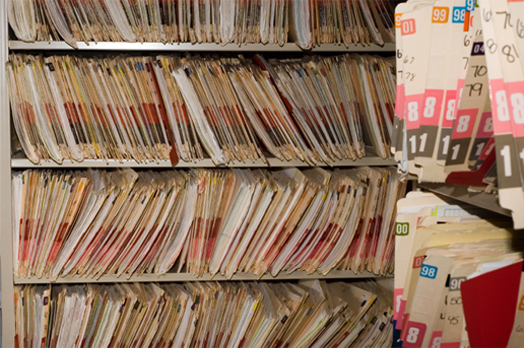We often spend more time talking about scanning standard office documents and managing them with an on premise or cloud-based document management system, but what about all those large engineering, construction and architectural drawings?
Many times the smaller documents are an integral part of a project that also includes these larger documents. In recent years, the industry has started to change the description of engineering drawings from “large format” to “wide format.”
 With the increased size of these documents you will have different challenges to capture digital images that will stand the test of time and be there when the information contained on the engineering drawing is needed.
With the increased size of these documents you will have different challenges to capture digital images that will stand the test of time and be there when the information contained on the engineering drawing is needed.
Many office documents have a limited records retention requirement, but its often quite different with engineering, construction or architectural drawings that must be retained throughout the life of the building, bridge, road or manufactured part has been replaced or destroyed.
With this extended records management requirement that could extend over several decades, you must assure the protection of the drawing and the information on the drawing.
With the advancements in digital scanning technology, we now have wide-format scanners that can handle black & white or color images that may come from original prints generated by a CAD system, older sepia, blueprints or diazo prints, or even translucent vellums.
In the past, and still available today, we would microfilm engineering drawings and create a silver master engineering aperture card, but these were always high contrast black & white images created on a large engineering microfilm camera equipped with lighting systems above and below the drawing that would be laid flat on the camera bed. When duplicate copies were required for distribution, a diazo duplicate aperture card was created and mailed to the person requesting the important information contained on the drawing.
As technology advanced, we moved from the drafting board to the computer as CAD systems evolved. While this was one of the early digital imaging system, companies still would print out the drawings and microfilm them for their archives. We were also able to create an engineering aperture card directly from the CAD image. This was a form of computer-output-microfilm that was becoming very popular with standard office documents that were being placed on microfiche.
Eventually we had excellent wide format scanners and companies and organizations could now scan their paper archives and capture legacy drawings and the critical information contained in the title block or notes on the drawing itself.
Depending on the age and condition of the engineering, construction or architectural drawings, it may still require the microfilming process first to obtain the contrast required for a readable digital imaging that might be stored in a document management system. There are many fragile drawings that have deteriorated significantly through the years of improper storage and handling.
If the drawings are in good condition then they can be scanned on a wide format scanner capable of taking traditional architectural and construction drawings that were usually up to 30” X 42” and engineering (mechanical, electrical or process control) drawings that could go up to 36” X 48”, but could be much larger and longer.
Unlike office document scanners, these wide format scanners do not have automatic feeding capabilities so in addition to the drawings be larger, they are more difficult to handle and it can be a time consuming process.
Many companies elect to outsource the scanning of engineering drawings because of these challenges. There is a world of difference between standard office documents that are usually 8.5” X 11” up to 11” X 17” and the wide format engineering drawings. You will want to work with a service provider that fully understands the unique requirements that come with larger size documents. The value of these drawings will extend over many decades. Find a solutions provider that understands your business and knows what to do with these drawings to that your investment in wide format imaging pays dividends and protects for years into the future.


